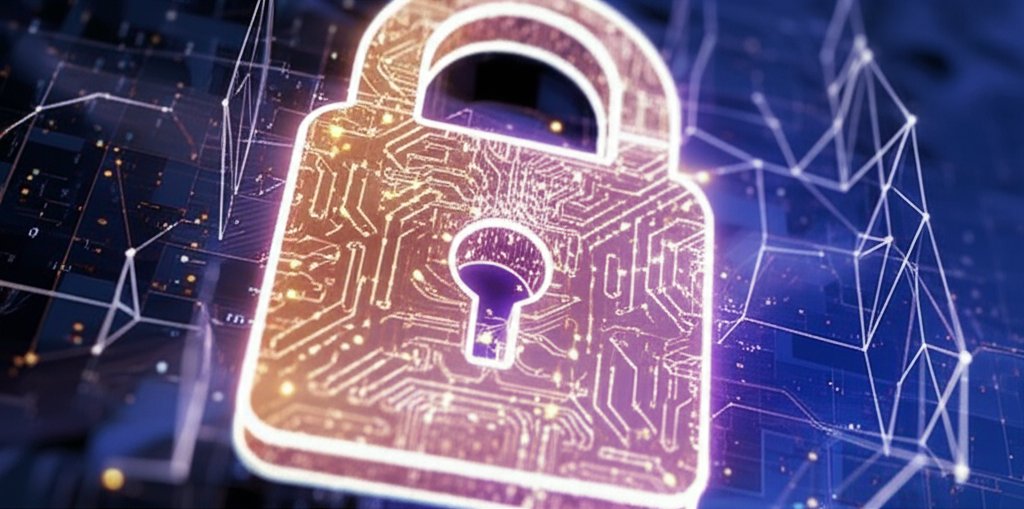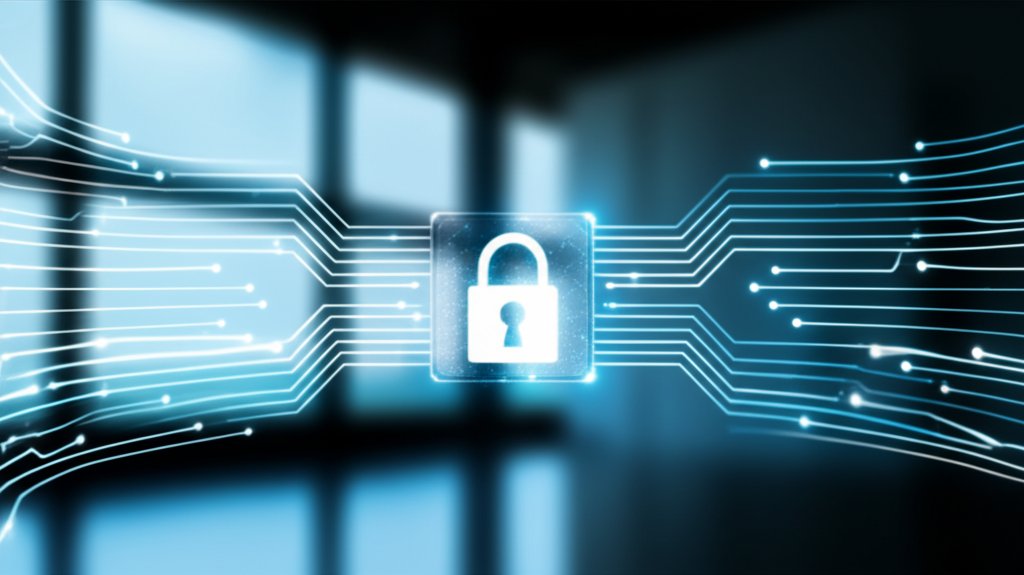In our increasingly digital world, the security of our data isn’t just a technical concern; it’s a fundamental personal and business imperative. Every single day, we rely on robust encryption to keep our online banking secure, our emails private, and our communications confidential. But what if the very foundations of that pervasive security were to crumble under an emerging threat?
This isn’t a plot from a futuristic thriller. It’s the stark reality that the advent of powerful quantum computing promises, and it’s precisely why quantum-resistant encryption (QRE) is rapidly becoming the non-negotiable future of data security for everyone.
As a security professional, my role is to help translate complex technical threats into understandable risks and, most importantly, provide practical, actionable solutions. Today, we’re going to dive into what makes quantum-resistant encryption crucial, why this challenge directly impacts you right now, and what concrete steps you can take to proactively protect your digital future.
Quantum-Resistant Encryption: The Future of Data Security for Everyone
The Looming Threat: How Quantum Computers Could Break Today’s Encryption
To fully grasp the urgent need for quantum-resistant encryption, we must first understand the immense power of quantum computers and the specific, existential threat they pose to our current security protocols. This isn’t about fostering panic, but rather about ensuring informed preparedness.
What is a Quantum Computer (in simple terms)?
To simplify, imagine the difference between a simple light switch that is either on or off (like a classical computer’s bit) and a dimmer switch that can be on, off, or anywhere in between, and even exist in multiple states simultaneously (like a quantum computer’s qubit). Classical computers process information as bits, which are strictly 0 or 1. Quantum computers utilize “qubits” which, through phenomena like superposition and entanglement, can be 0, 1, or both at the same time. This extraordinary capability allows them to process vast amounts of information in parallel and efficiently tackle certain complex problems that are simply impossible for even the most powerful conventional supercomputers. We are talking about an entirely new dimension of computational speed and capability.
The Problem with Our Current Digital Locks: Crumbling Foundations
Today, the digital locks that protect your online banking, secure websites (HTTPS), VPNs, private messages, and countless other digital interactions rely on incredibly difficult mathematical problems. For conventional computers, solving these problems to break encryption would literally take billions of years – an effectively impossible task. The most common and widely used types, such as RSA and Elliptic Curve Cryptography (ECC), are what we call “public-key” encryption systems. These algorithms are the very foundations of our current digital security.
However, once sufficiently powerful quantum computers exist, armed with specialized algorithms like Shor’s algorithm, they can solve these specific mathematical problems with alarming speed. This means the encryption protecting your most sensitive data today – the very algorithms that form the bedrock of trust in our digital world – could be cracked wide open. While Shor’s algorithm primarily targets public-key systems like RSA and ECC, Grover’s algorithm could also significantly speed up attacks on symmetric encryption (like AES), though its impact isn’t as catastrophic as Shor’s on public-key infrastructure.
“Harvest Now, Decrypt Later”: The Silent Threat Already Here
You might reasonably think, “Well, powerful quantum computers are still years away, so I’ve got plenty of time to worry, right?” Not entirely. We are already facing what cybersecurity experts term the “Harvest Now, Decrypt Later” (HNDL) threat. Highly sensitive data – such as personal medical records, national secrets, valuable intellectual property, or long-term financial information – can be stolen by malicious actors today and stored. Once a powerful quantum computer becomes available, this harvested data could then be decrypted, exposing information that was intended to remain confidential for decades. This silent, insidious threat underscores why proactive measures, such as adopting quantum-resistant encryption for your data security, are critically important even now.
What Exactly is Quantum-Resistant Encryption (QRE)?
So, what’s our answer to this looming challenge? It’s not about building a quantum computer to fight a quantum computer. It’s about designing entirely new digital locks that can withstand this advanced computing power.
Not Just “Quantum Cryptography”: Understanding the Difference
It’s important to clarify a common misconception. Quantum-Resistant Encryption (QRE), also known as Post-Quantum Cryptography (PQC), isn’t about using quantum computers to encrypt data. Instead, it’s about developing new cryptographic algorithms that can run efficiently on conventional, everyday computers but are mathematically designed to resist attacks from both classical and future quantum computers. This distinguishes it from “quantum cryptography,” like Quantum Key Distribution (QKD), which often requires specialized quantum hardware and is primarily used for highly secure point-to-point communication, but isn’t scalable for widespread software encryption in the same way QRE is.
The New Mathematical Fortresses
QRE researchers are actively developing entirely new types of mathematical problems that are believed to be intractable for both classical and quantum computers. These innovative approaches include areas like lattice-based cryptography, hash-based cryptography, and code-based cryptography. Think of them as new, incredibly complex mathematical fortresses that quantum computers would find just as hard to breach as classical ones. These are the “future-proof” algorithms designed specifically to withstand the quantum threat, ensuring our data remains secure for the long haul. Building on these quantum-resistant algorithms for data security is key to our collective digital future.
Why QRE is the Non-Negotiable Future of Data Security
You might be thinking, “Is this really going to affect me? My online life seems perfectly fine.” The truth is, the quantum threat affects everyone, and its impact will only grow over time.
Protecting Your Everyday Online Life
From the moment you log into your email, make a purchase online, use a VPN, or send a secure message, you are relying on encryption. As these essential services transition to QRE, your online activities will continue to be protected from future quantum attacks. It ensures your secure online shopping, private emails, and confidential VPN connections remain truly private and secure, regardless of how powerful future quantum computers become. It’s about preserving your quantum resistance for future-proofing your data security.
A Lifeline for Small Business Data
For small businesses, data isn’t just information; it’s currency and a fundamental asset. Customer information, financial records, valuable intellectual property, and internal communications – all of it demands robust protection. A data breach, especially one caused by a quantum attack in the future, could be catastrophic, leading to severe financial losses, crippling legal repercussions, and a devastating blow to customer trust and hard-earned reputation. Implementing QRE safeguards these critical assets, helping small businesses maintain trust and remain competitive in an increasingly complex and threatening digital landscape. This makes quantum-resistant encryption vital for business security.
Staying Ahead of Regulatory Requirements and Compliance
Governments and regulatory bodies around the world are already actively recognizing and responding to the quantum threat. We are seeing evolving standards and guidelines that will, in time, mandate quantum-safe encryption for certain types of data and critical infrastructure. Being prepared isn’t just good practice; it will soon be a fundamental compliance necessity, helping organizations avoid severe penalties and maintain their operational licenses and public trust.
The Road to a Quantum-Safe World: What’s Happening Now
The good news is that we’re not simply waiting for the quantum apocalypse. Significant and proactive work is already underway globally to prepare our digital world for this transition.
Global Efforts to Standardize QRE (e.g., NIST)
Leading organizations like the U.S. National Institute of Standards and Technology (NIST) are spearheading global efforts to rigorously evaluate, select, and standardize quantum-resistant cryptographic algorithms. After years of intensive research and evaluation, NIST has announced initial algorithms like CRYSTALS-Kyber (for key exchange) and CRYSTALS-Dilithium (for digital signatures) as candidates for standardization. This standardization process is absolutely crucial because it ensures that future quantum-safe systems can communicate and interoperate seamlessly across different platforms, services, and national boundaries.
Early Steps: QRE in Action Today
Some of the technology you use every day is already quietly taking significant steps towards quantum safety. Major industry players like Google (in Chrome), Apple (in iMessage), Signal, and AWS are actively experimenting with or already deploying “hybrid encryption.” This isn’t full QRE yet; it’s a smart, pragmatic transitional strategy where both current, proven encryption methods and new quantum-resistant algorithms are used simultaneously. This layered approach ensures that even if one method eventually fails (either classical or quantum), the other can still protect the data, offering enhanced security during this critical transition period. It’s a testament to the proactive planning already in motion.
What You Can Do Now to Prepare for a Quantum-Safe Future
As a security professional, my goal isn’t just to identify problems; it’s to offer concrete, empowering solutions. The excellent news is that for many of us, preparing for a quantum-safe future won’t require becoming a cryptography expert. It’s about making smart, informed choices today.
For Everyone:
- Stay Informed and Aware: Continue to educate yourself on cybersecurity trends, especially those related to encryption and emerging threats. Understanding the evolving landscape empowers you to make better, more secure decisions about your digital life. Follow reputable security blogs and news outlets.
- Prioritize Software Updates: This is a fundamental and often overlooked security practice. Many operating systems, web browsers, and applications will integrate QRE seamlessly through regular software updates. By consistently updating your devices and software, you’ll be passively adopting the latest security measures as they roll out, including new quantum-resistant features. Don’t defer updates!
- Choose Quantum-Aware Services: As you select new digital services (e.g., VPNs, email providers, cloud storage, messaging apps), make an effort to research and choose companies that openly discuss their quantum-readiness plans or announce their adoption of post-quantum cryptography. Look for statements on their security pages or in their privacy policies. Choosing providers committed to future-proofing their security adds a critical layer of protection for your data.
For Small Businesses: Start Planning Strategically
If you run a small business, proactive planning is not just good practice; it’s a strategic imperative for long-term resilience.
- Inventory Your Digital Assets: Start by identifying your most sensitive data and critical digital assets that require long-term protection. This includes customer information, financial records, proprietary business secrets, and any data with a long shelf-life. Knowing what you need to protect is the essential first step in any security strategy.
- Engage with Vendors & Partners: Proactively talk to your IT providers, software vendors, cloud services, and any third-party partners about their quantum-readiness plans. Ask them what specific steps they’re taking to implement quantum-resistant algorithms for business data. Your supply chain’s security is an extension of your own.
- Develop a “Quantum Migration” Roadmap: This doesn’t need to be a complex, multi-year project immediately. Start with a loose, flexible plan to stay informed, prioritize software and system updates, and identify key areas where you might need expert advice on integrating quantum-safe solutions as they become more mature and mainstream. Consider a “crypto agility” strategy that allows for easy swapping of cryptographic primitives.
- Educate Your Team: Ensure your employees understand the importance of data security, including the future implications of quantum computing. A well-informed team is your first line of defense against current and future threats.
Conclusion: Embracing a Secure Digital Tomorrow
The rise of quantum computing is not a threat to panic over, but a significant and inevitable evolution in our digital landscape that demands a proactive, thoughtful, and strategic response. Quantum-resistant encryption is our collective technological answer, ensuring that the digital locks we rely on today will continue to protect our privacy, security, and trust tomorrow.
By staying informed, rigorously prioritizing software updates, and making conscious choices about the services we use, both personally and professionally, we can all contribute to and embrace a secure digital future. We can be confident that our data remains shielded against emerging cyber threats. It’s about taking control of your digital security, understanding the horizon, and taking informed, actionable steps today to protect your tomorrow.



